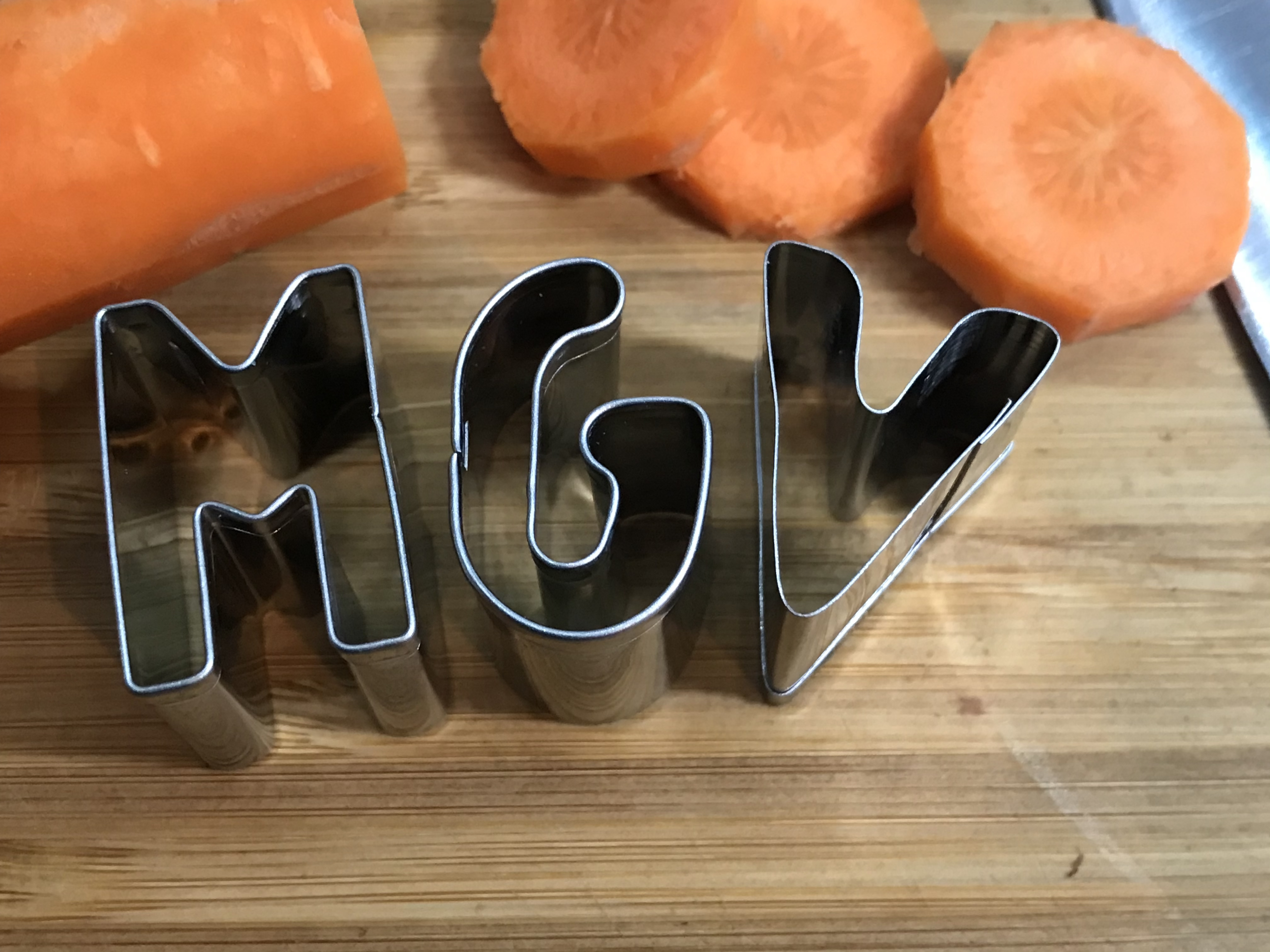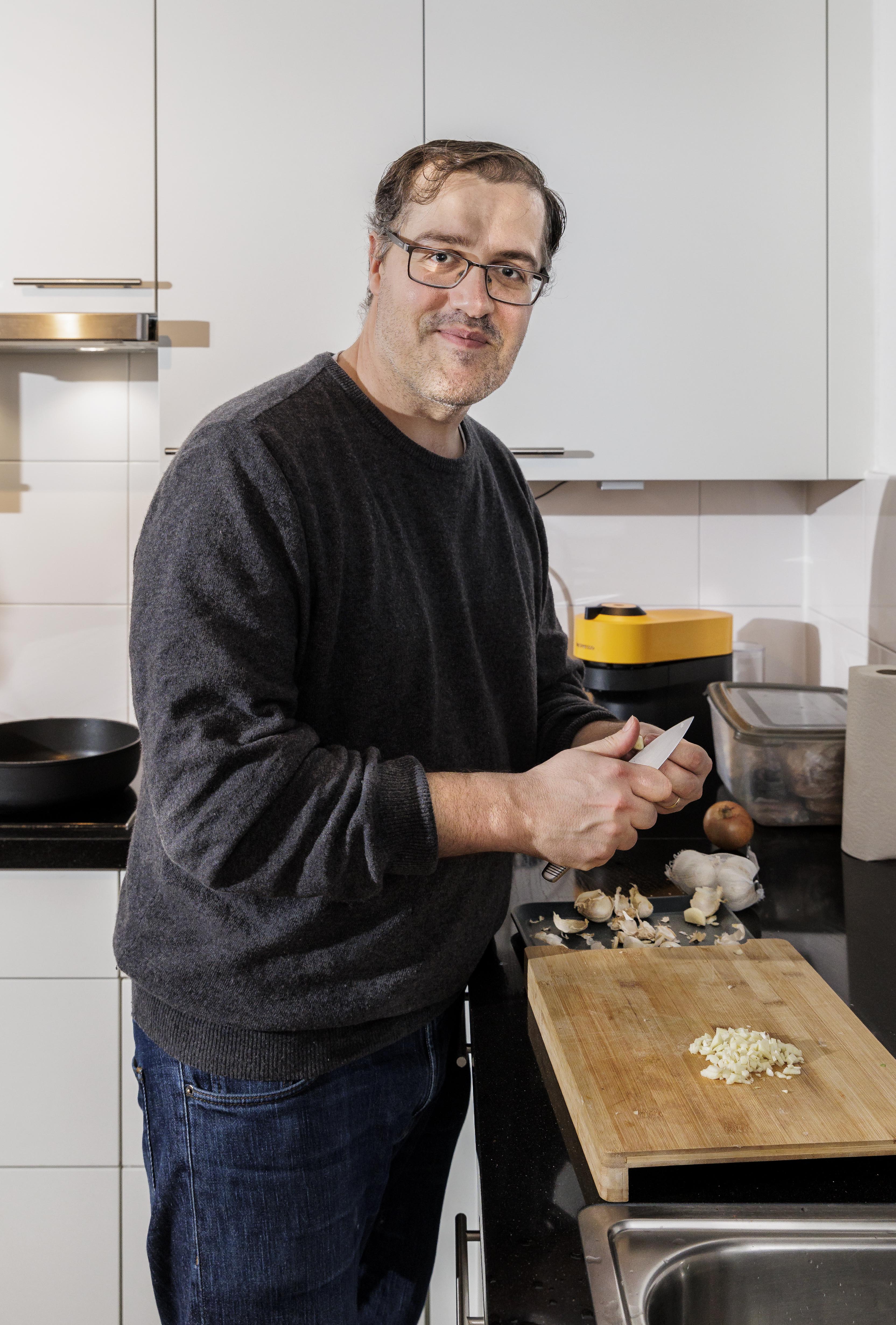“I miss the smell of street food”
As a toddler, Pieter du Plessis couldn’t stay away from the kitchen. He later entertained the idea of becoming a chef—until his dream faltered under the harsh light of reality. Now a PhD candidate at Maastricht University, he uses national dishes as a lens to examine South Africa’s past and identity. A juicy fact: Du Plessis, who grew up in a meat-eating culture, recently went vegan.
“I’ve been cooking since I could walk,” he says as we enjoy our rooibos tea with homemade melktert. “Coconut tart” would be a more apt term: having recently turned vegan, Du Plessis substituted the milk with coconut cream. “I was always in the kitchen, helping whoever was cooking—usually my grandmother or our housekeeper. All my childhood pictures have me holding food. There’s a video of me sleeping on a magazine opened to the recipe section, where it looks like I’m eating the food right off the page.”
Du Plessis grew up in the town of Kriel, now Ga-Nala, in South Africa’s main coal-mining region. Almost all its residents were involved with the mines. “People there often ate meat, lots of it, like boerewors cooked on the braai. At home, we ate bobotie and meat pies, and for breakfast we had pap—porridge—with milk, cinnamon and sugar. But pap is also the basis of a traditional South African dish: pap, chakalaka and boerewors. My grandmother, our housekeeper and family friends taught me a lot about how to make simple but delicious dishes, without using expensive ingredients.”
Pommes Anna
Du Plessis got serious about cooking when he was a teenager. He read food magazines, tried out recipes, went to hospitality school and even won a chef competition. “My winning dish was filet mignon with chocolate and a red wine sauce, asparagus and Pommes Anna.” But the harsh reality of everyday life left his dream in tatters. “I was working myself to the bone for very little money. I wanted to make money, because that was a way for less privileged people like me to go to university. I decided to study anthropology, not that I had any idea what it was about.” Cooking remained his favourite hobby.
Text continues below the photo.
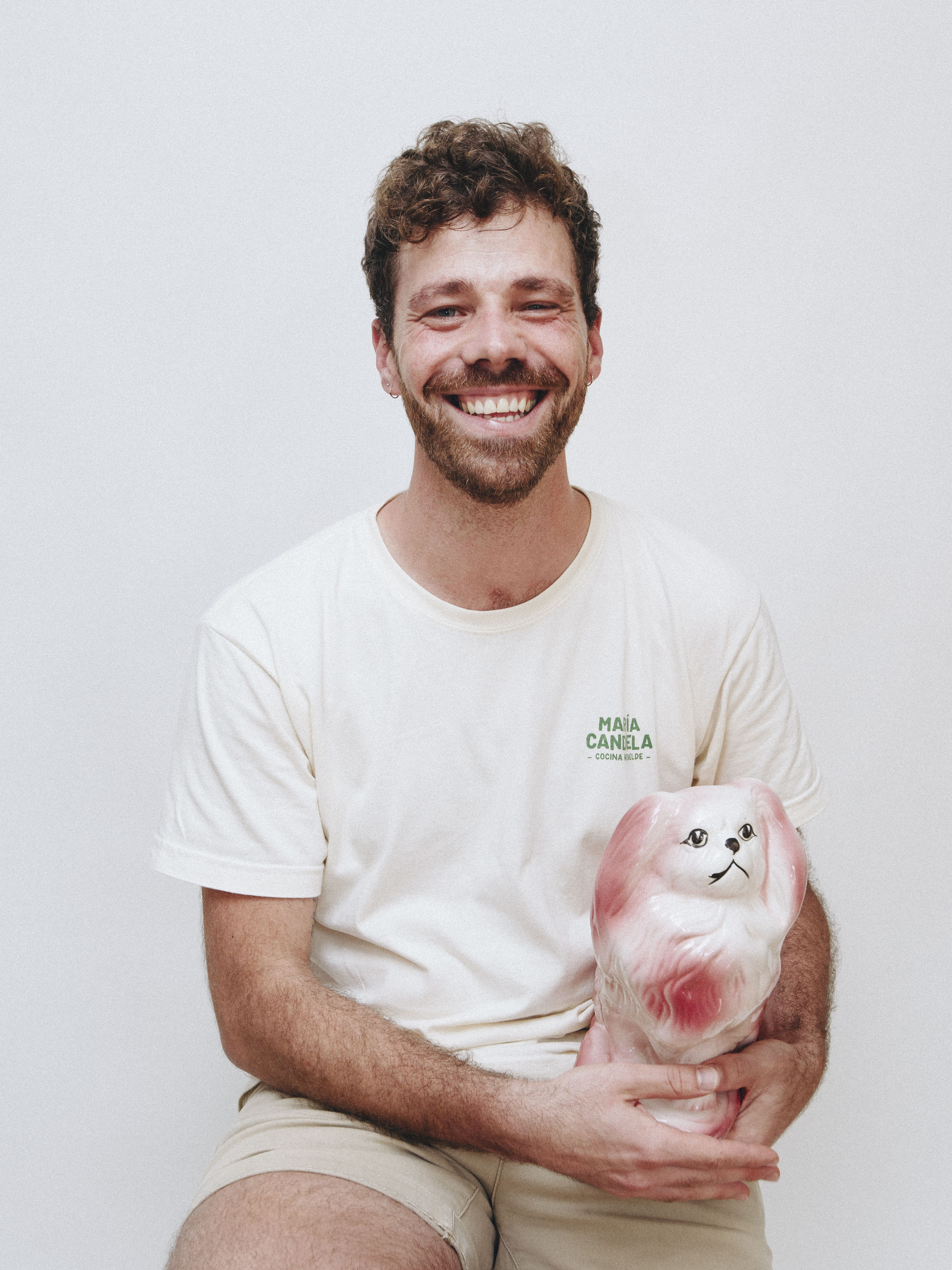
Pieter du Plessis obtained his master’s degree in Gender Studies (cum laude) from Utrecht University. His PhD research at the UM Faculty of Arts and Social Sciences focuses on the transnational and relational construction of Dutch “whiteness” through the lens of Dutch cultural heritage institutions, particularly the South Africa House in Amsterdam.
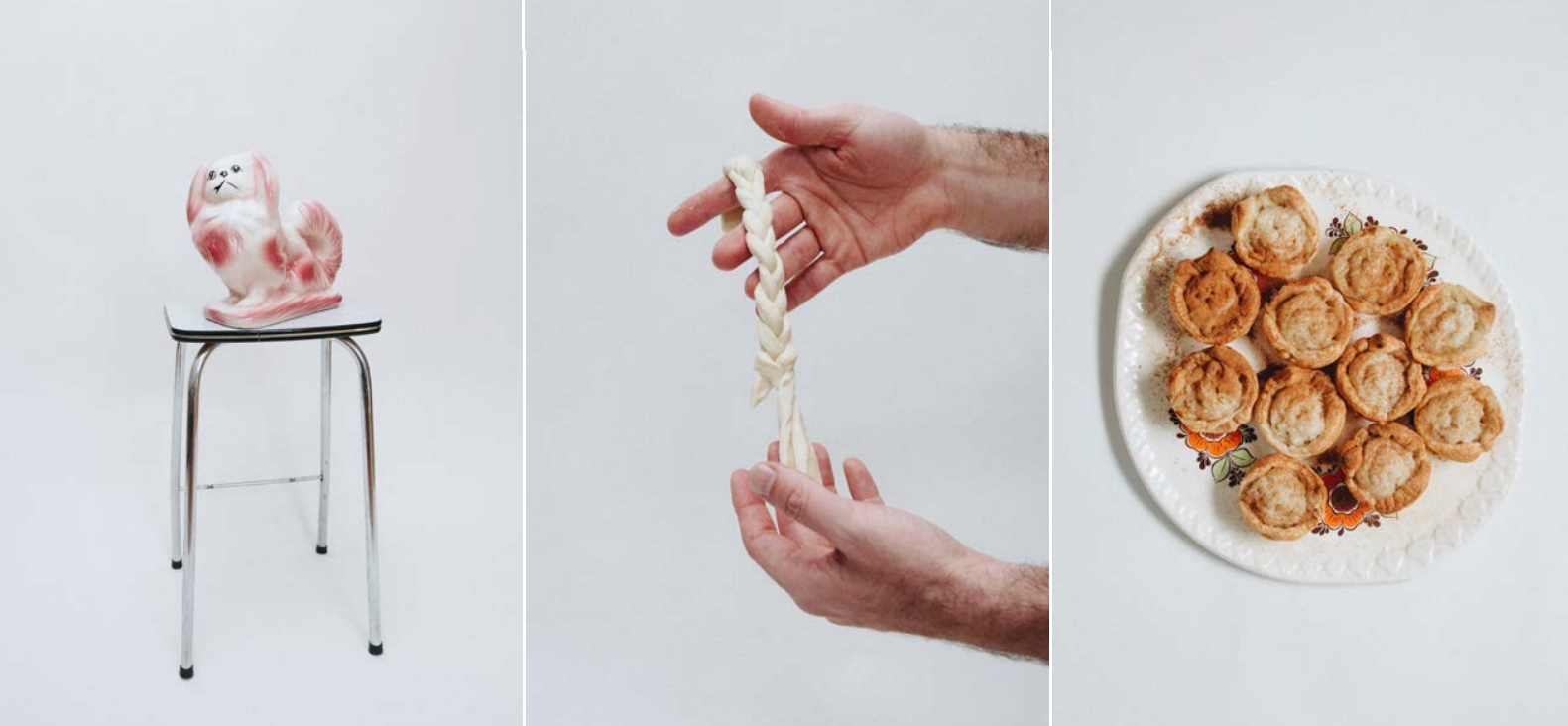
Biltong
Du Plessis’s research reflects his fascination with food and cooking. He even wrote his master’s thesis in the form of a recipe book. “I used the lens of food to look at the past and identity of South Africa, specifically white Afrikaners. What you see is that different population groups claim dishes as their own. Take biltong and droëwors, dried meat brought in ships by Dutch colonists; history shows that indigenous peoples were also familiar with this preservation method. If you trace their history, many recipes turn out to be a mixture of different cultures. This diversity and range of cultural influences are typical of South African cuisine.”
Boerewors
At its core, he says, this is a debate about the process of identity and nation building through food. “Boerewors, for instance, is a difficult food to discuss, as it’s associated with boers or Afrikaners—highly charged terms. And historians debate whether bobotie was brought over by Dutch colonists or created in their kitchens by the people they enslaved. These tensions are about who controls the narrative of what is typically South African, and who has contributed what.” Du Plessis sees these debates as a positive sign: they show that people want to belong. But there are more important questions to ask. “Those are about our willingness to change ourselves. How do we bring these groups together? When do you call something ‘national food’? When do we become a country?”
Bobotie
In recent years, Du Plessis has been combining different cuisines—Italian, Indian, Japanese and Korean. “I like to experiment rather than following a recipe. Maybe I just don’t like following rules,” he laughs. He sees food as a way of connecting with friends, family and acquaintances. “Talking about what you like to eat gives you a glimpse into each other’s lives. It can kick off a relationship or even lead to love. That’s how my boyfriend and I got together. I cooked bobotie for him, with lentils instead of mince. He loved it. He keeps asking me to cook it again. It’s like they say—the way to a man’s heart is through his stomach.”
Vetkoek
He misses South African cuisine and food culture, especially the smell of street food. “Vetkoek, a snack you buy on the street and eat with your fingers. Or roasted corn for lunch. At the mall, there was always a woman selling samosas, triangular savoury pastries from India. These are the smells of my childhood that were part of everyday life.” For somebody who grew up in a meat-eating culture, the main challenge of veganism lies in adapting his cooking habits. “I approach it like a researcher: how can I solve this? How can I make a plant-based melktert?”
Text: Hans van Vinkeveen
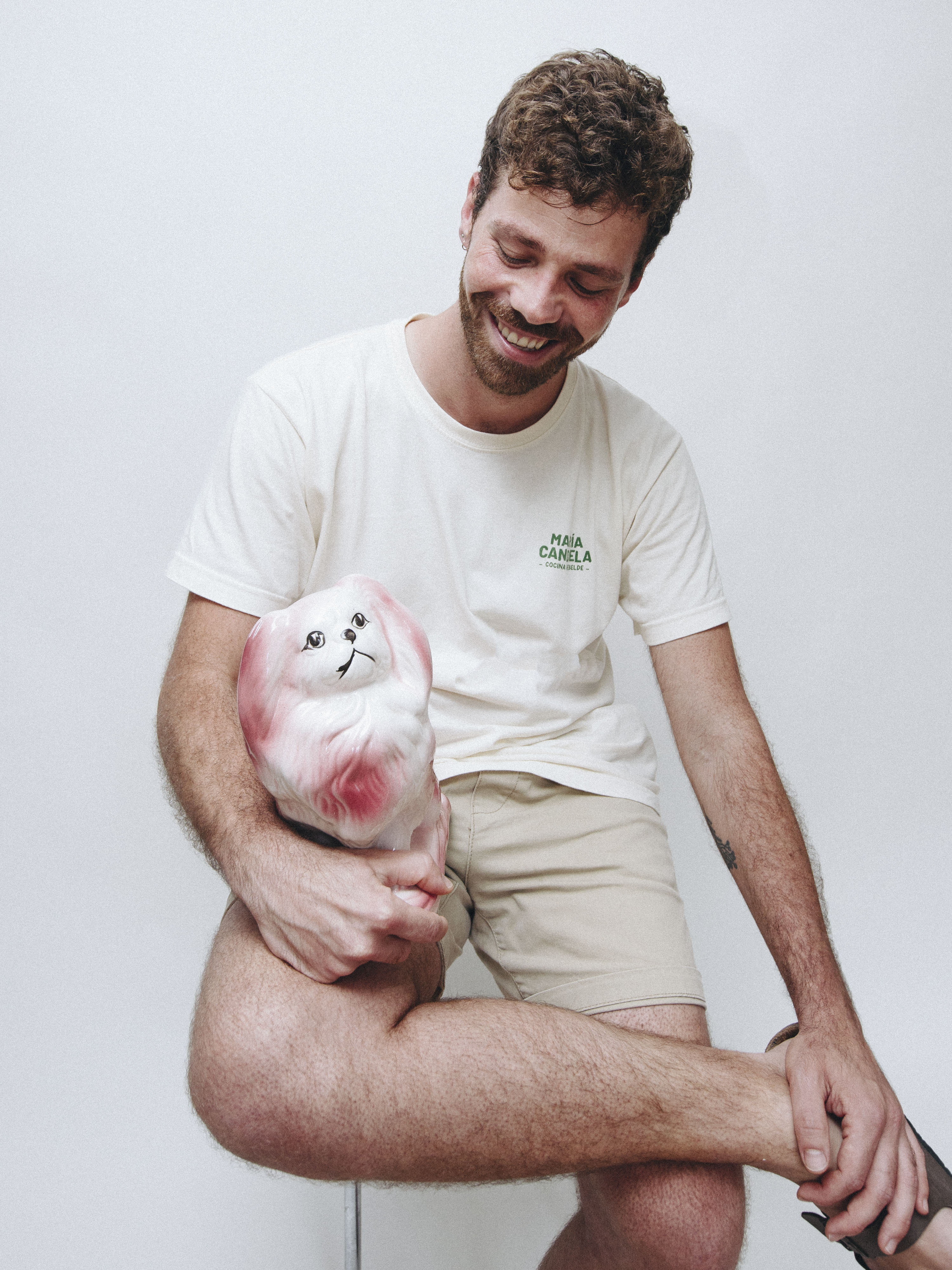
Typically South African
afval: offal dish
biltong: snack of dried strips of meat
bobotie: dish of spiced minced meat with yellow rice and raisins
boerewors: sausage to cook on the braai
braai: barbecue
chakalaka: spicy vegetable relish
droëwors: dried sausage eaten as a snack food
koeksister: confectionery made of plaited fried dough
melktert: sweet pastry crust with a creamy filling of milk, sugar and eggs
pap: maize porridge
potjiekos: stew made with meat, potatoes or rice and vegetables
rooibos: herbal tea, national beverage
vetkoek: a small cake of deep-fried dough filled with meat, cheese or jam
Also read
-
Alumnus Alessandro Portante is running twenty marathons in twenty days across the twenty regions of his home country Italy, a challenge he calls Project Venti.
-
For a casual way to explore tasty plant-based cuisine in good company, you may want to check out Maastricht goes Vegan, a non-profit cooking event. Werner Teeling of the Faculty of Psychology and Neuroscience is one of the organisers.
-
David Baião Barata was born and raised in Castelo Branco, in eastern Portugal. His mother cooked typical Portuguese cuisine: hearty soups, lots of meat, everything doused in olive oil. It was only during his studies in cell and molecular biology in Lisbon that he began cooking for himself. And it...

